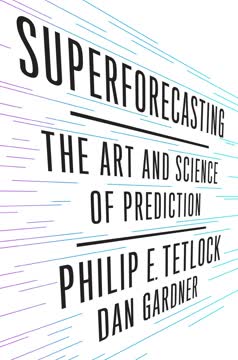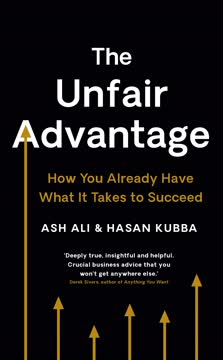Key Takeaways
1. Strategic thinking is essential in competitive environments
Strategic thinking is the art of outdoing an adversary, knowing that the adversary is trying to do the same to you.
Ubiquity of strategy: Strategic thinking permeates all aspects of life, from business and politics to personal relationships. It involves anticipating others' actions and making decisions that account for these expectations.
Key elements of strategy:
- Understanding your own goals and constraints
- Analyzing your opponents' motivations and capabilities
- Predicting possible outcomes of different actions
- Choosing moves that maximize your chances of success
Strategic thinking requires a shift in perspective, placing yourself in your opponent's shoes to anticipate their likely responses. This recursive thought process – "I think that he thinks that I think..." – is at the core of game theory, the mathematical study of strategic decision-making.
2. Look ahead and reason backward to make optimal decisions
Rule 1: Look ahead and reason back.
Backward induction: This powerful technique involves starting at the end of a decision tree and working backwards to determine the optimal strategy at each point. By anticipating future outcomes, you can make better choices in the present.
Key applications:
- Chess: planning several moves ahead
- Business: projecting long-term consequences of current decisions
- Negotiations: understanding how final outcomes shape initial positions
Limitations: While extremely useful, this approach assumes perfect information and rational actors. In reality, uncertainty and human psychology can complicate strategic situations.
3. In simultaneous-move games, use dominant strategies or find equilibrium
If you have a dominant strategy, use it.
Dominant strategies: These are actions that are optimal regardless of what your opponent does. If you have one, use it. If your opponent has one, assume they'll use it and respond accordingly.
Nash equilibrium: When no player can unilaterally improve their position by changing strategy, you've reached a Nash equilibrium. This concept, developed by John Nash, is crucial for analyzing many real-world strategic situations.
Steps for analyzing simultaneous-move games:
- Look for dominant strategies
- Eliminate dominated strategies
- Find Nash equilibria
- If multiple equilibria exist, consider which is most likely or use mixed strategies
4. Mixed strategies are crucial when pure strategies fail
The right amount of unpredictability should not be left to chance.
Randomization in strategy: In many competitive situations, being predictable is a weakness. Mixed strategies involve randomly choosing between different actions according to specific probabilities.
Key concepts:
- Minimax theorem: In zero-sum games, mixed strategies guarantee a minimum expected payoff
- Equalizing strategies: Make your opponent indifferent between their options
- Applications: Sports strategies, military tactics, pricing decisions
Calculating optimal mix: While intuition can guide simple cases, more complex situations require mathematical analysis to determine the ideal probabilities for each action.
5. Credible commitments can shape outcomes in strategic interactions
Credibility requires a commitment to the strategic move.
Power of commitment: By credibly limiting your future options, you can influence others' behavior to your advantage. This seemingly counterintuitive idea is a cornerstone of strategic thinking.
Methods for creating credible commitments:
- Reputation building
- Contracts with penalties
- Burning bridges (eliminating alternatives)
- Third-party enforcement
Challenges: The key difficulty lies in making commitments truly believable. Empty threats or promises are quickly seen through by strategic opponents.
6. Brinkmanship involves controlled escalation of risk
The essence of brinkmanship is the deliberate creation of risk.
Calculated risk-taking: Brinkmanship involves pushing a situation to the edge of disaster to force concessions from an opponent. The key is creating a risk that is intolerable to the other party but still acceptable to you.
Elements of successful brinkmanship:
- Gradual escalation of tension
- Clear communication of stakes
- Maintaining some level of unpredictability
- Having a credible "out" to de-escalate
Historical examples: The Cuban Missile Crisis exemplifies brinkmanship in international relations. Similar tactics are used in business negotiations and labor disputes.
7. Cooperation can emerge from repeated interactions
Tit-for-tat is as clear and simple as you can get. It is nice in that it never initiates cheating. It is provocable, that is, it never lets cheating go unpunished. And it is forgiving, because it does not hold a grudge for too long and is willing to restore cooperation.
Evolution of cooperation: In repeated interactions, cooperative strategies can outperform purely selfish ones. The famous "tit-for-tat" strategy (cooperate first, then mirror your opponent's last move) is remarkably successful in many scenarios.
Factors promoting cooperation:
- Long-term relationships
- Clear communication
- Ability to punish defection
- Shared benefits from cooperation
Limitations: While powerful, strategies like tit-for-tat can break down in noisy environments where misunderstandings occur. More sophisticated approaches may be needed in complex, real-world situations.
8. Incentives shape behavior in complex ways
The common feature to all threats and promises is this: the response rule commits you to actions that you would not take in its absence.
Designing effective incentives: Understanding how people respond to rewards and punishments is crucial for shaping behavior. However, poorly designed incentives can often backfire or have unintended consequences.
Key principles:
- Align incentives with desired outcomes
- Consider both short-term and long-term effects
- Account for risk preferences and time discounting
- Be aware of potential gaming of the system
Examples: Performance-based pay, environmental regulations, and educational policies all rely on carefully crafted incentive structures to achieve their goals.
9. Voting systems and auctions have strategic implications
Nothing in the notion of equilibrium tells us which (if either) does or should prevail. When a game has many equilibria, the players must have a common understanding of which one to pick.
Voting paradoxes: The way votes are tallied can dramatically affect outcomes. Strategic voting (not voting for your true preference) can occur in many systems.
Auction design: Different auction formats (e.g., English, Dutch, sealed-bid) create different incentives for bidders. The revenue equivalence theorem shows that under certain conditions, many auction types yield the same expected revenue.
Key considerations:
- Information revelation
- Efficiency of allocation
- Susceptibility to collusion
- Robustness to strategic manipulation
10. Bargaining outcomes depend on patience and alternatives
The general idea is that the better a party can do by itself in the absence of an agreement, the higher will be its share of the pie that is the subject of the bargaining.
Bargaining power: The outcome of negotiations is shaped by each party's alternatives (BATNA - Best Alternative to a Negotiated Agreement) and their relative patience or time pressure.
Factors influencing bargaining:
- Deadlines and time constraints
- Outside options
- Information asymmetries
- Ability to make credible commitments
Strategic moves in bargaining: Tactics like setting deadlines, improving one's alternatives, or strategically revealing (or concealing) information can significantly impact negotiation outcomes.
Last updated:
FAQ
What's Thinking Strategically about?
- Focus on Strategic Thinking: The book delves into the art of strategic thinking, teaching readers how to outmaneuver adversaries in various contexts, including business, politics, and personal life.
- Game Theory Foundation: It introduces game theory as the underlying science of strategic decision-making, explaining how choices interact among different players.
- Real-World Applications: Through diverse examples from sports, politics, and economics, the authors illustrate strategic principles, making the concepts relatable and applicable.
Why should I read Thinking Strategically by Avinash K. Dixit?
- Enhance Decision-Making Skills: The book provides tools to improve strategic thinking, crucial for thriving in competitive environments.
- Accessible to All: It simplifies complex game theory concepts for general readers, avoiding heavy jargon and mathematics.
- Practical Examples: With numerous case studies and anecdotes, readers can see how strategic thinking applies to everyday situations, enhancing its relevance.
What are the key takeaways of Thinking Strategically?
- Understanding Rival Behavior: Anticipating rivals' responses is crucial for effective strategy formulation.
- Sequential vs. Simultaneous Moves: The book explains how strategies differ in sequential and simultaneous games.
- Commitment and Credibility: Emphasizes the need for credible commitments in strategic moves, affecting outcomes through promises and threats.
How does Thinking Strategically define strategic moves?
- Definition of Strategic Moves: Actions taken to influence others' beliefs and behaviors for personal benefit.
- Types of Moves: Categorizes moves into unconditional moves, threats, and promises, each serving different strategic purposes.
- Importance of Commitment: The effectiveness of a move often depends on the credibility of the commitment behind it.
What is the Prisoners’ Dilemma in Thinking Strategically?
- Definition of the Dilemma: A scenario where two players decide whether to cooperate or betray, with outcomes dependent on both players' choices.
- Dominant Strategies: Each player has a dominant strategy to betray, leading to a worse outcome for both compared to mutual cooperation.
- Real-World Implications: Illustrates challenges in achieving cooperation in fields like business and politics, where individual incentives conflict with collective benefits.
What is brinkmanship as defined in Thinking Strategically?
- Escalation of Threats: Brinkmanship involves escalating threats to compel an opponent to concede, increasing the risk of conflict.
- Risk Management: Successful brinkmanship requires managing risks, with parties willing to expose themselves to some level of risk to make threats credible.
- Historical Examples: Uses events like the Cuban Missile Crisis to show how brinkmanship can be effectively employed.
How does Thinking Strategically address unpredictability?
- Importance of Unpredictability: Being unpredictable can prevent opponents from effectively countering your strategies.
- Mixing Strategies: Encourages mixing strategies to maintain surprise, making it harder for rivals to anticipate moves.
- Real-World Examples: Provides examples from sports and business to illustrate unpredictability as a strategic advantage.
What role does credibility play in strategic commitments in Thinking Strategically?
- Definition of Credibility: Refers to the belief that a player will follow through on threats or promises, crucial for effective strategic moves.
- Building Credibility: Outlines methods to enhance credibility, such as establishing a reputation or using contracts to enforce commitments.
- Consequences of Lack of Credibility: Without credibility, strategic moves may fail to influence opponents, leading to suboptimal outcomes.
What are dominant and dominated strategies in Thinking Strategically?
- Dominant Strategy: Yields a better outcome regardless of the other player's actions, simplifying decision-making.
- Dominated Strategy: Worse than another strategy in all scenarios and should be avoided.
- Strategic Implications: Helps players identify optimal strategies and avoid choices leading to inferior outcomes.
What are some real-world applications of game theory in Thinking Strategically?
- Business Negotiations: Game theory helps parties understand positions and potential outcomes, leading to effective bargaining strategies.
- Political Strategy: Political actors use game theory to anticipate opponents' moves and shape strategies, relevant in campaigns and negotiations.
- Everyday Decision-Making: Principles apply to everyday decisions, improving personal interactions and conflict resolution.
What is the significance of credible commitments in Thinking Strategically?
- Influencing Behavior: Credible commitments bind one to a course of action, influencing others' behavior and enhancing trust.
- Long-Term Strategy: Emphasizes that credible commitments lead to better long-term outcomes, affecting future interactions.
- Examples of Commitment: Provides examples from international treaties and business contracts, illustrating practical importance.
What are the best quotes from Thinking Strategically and what do they mean?
- “The essence of strategy is choosing what not to do.”: Highlights the importance of focus in strategic decision-making, suggesting prioritization.
- “In a competitive world, the best way to predict the future is to create it.”: Emphasizes proactive strategic thinking, encouraging initiative.
- “Brinkmanship is a strategy of risk-taking.”: Encapsulates brinkmanship, underscoring the idea that successful negotiation involves managing risks.
Review Summary
Thinking Strategically receives mostly positive reviews for its accessible introduction to game theory concepts. Readers appreciate the real-world examples and case studies, though some find certain sections dry or dated. The book is praised for its clear explanations of strategic decision-making principles without heavy mathematics. Critics note that it oversimplifies human behavior and lacks depth in some areas. Overall, it's considered a valuable resource for understanding basic game theory and its applications in business, politics, and everyday life.
Similar Books










Download PDF
Download EPUB
.epub digital book format is ideal for reading ebooks on phones, tablets, and e-readers.





